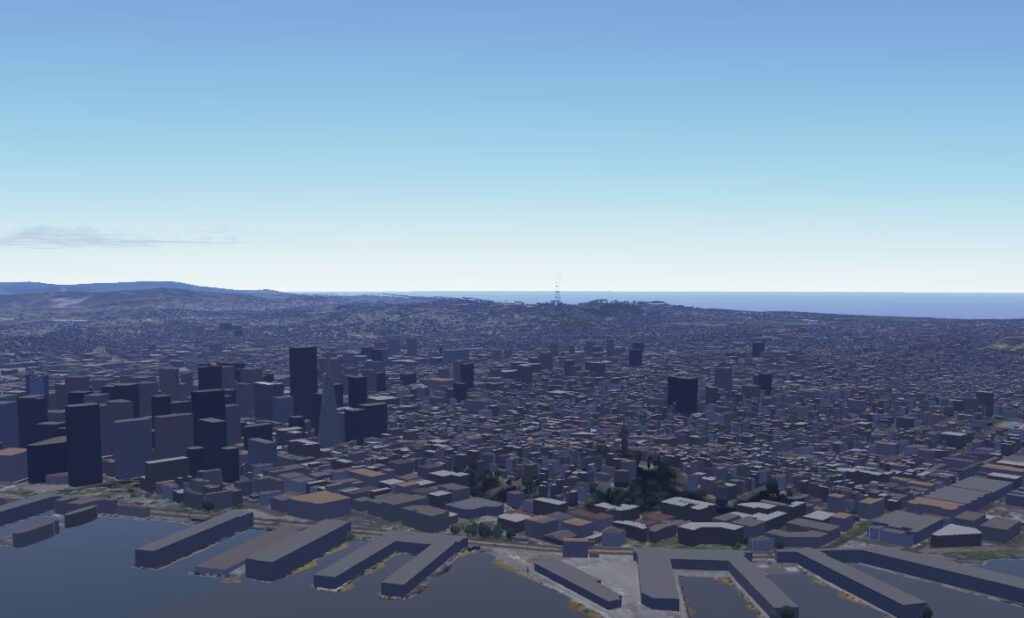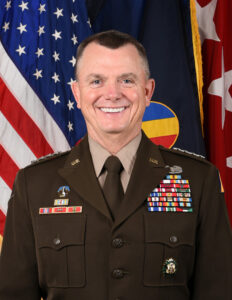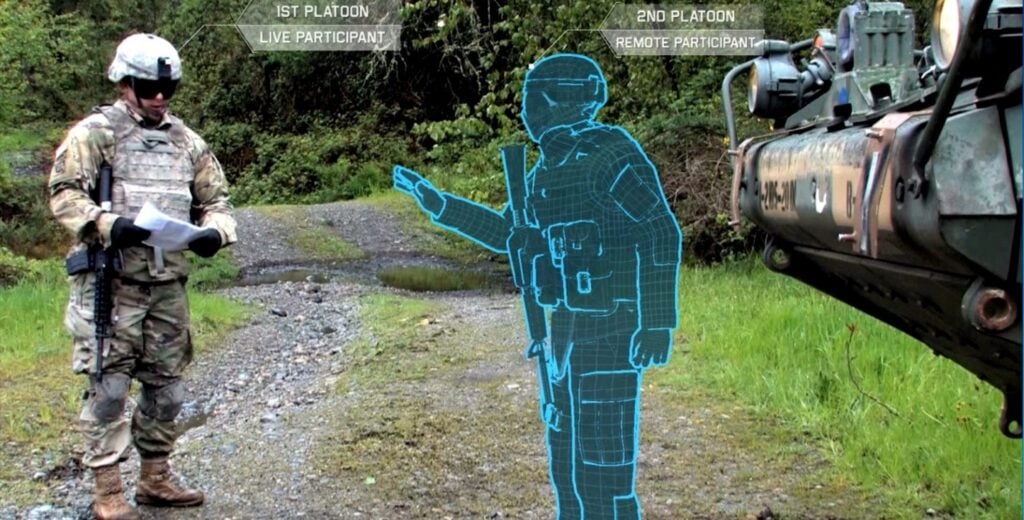
An early version of One World Terrain, the Army’s attempt at a 3D digital world map detailed enough for training simulations and mission planning.
WASHINGTON: “In a more complex world, the one principle of war we need to remember is simplicity,” Gen. Paul Funk told the AFCEA TechNet August conference this morning. “Our job is to take incredibly complex skills or environments and simplify ’em and bring them into a task list that a squad leader and his squad can execute on any corner in the world.”
As chief of Training & Doctrine Command Funk has to help commanders and instructors at every level prepare for the complexity of information-age All-Domain Operations without being overwhelmed by it. That philosophy, he told TechNet, is driving TRADOC’s embrace of three major initiatives.

Gen. Paul Funk
First, the Army is rewriting its top-level field manual for how to organize training, FM 7-0, last revised in 2016 to reflect rising threats from Russia and China. A draft’s now circulating for comment from commands around the world, Funk said, and the new version’s focus is more practical than philosophical. “It’s more of a ‘how-to’ again, how to train and how do assessments [and] evaluations,” he said. It simplifies a host of existing training documents by “reintroducing the training management cycle” as a standardized process, and it’ll be accompanied by easier online access to digital tools for small unit leaders.
Second, the Army is rolling out a prototype of a new Army Training Information System (ATIS), which Funk says will combine “over 28 separate and distinct” existing systems currently used to plan training events, run them and assess them. Once ATIS is fully implemented, Funk said, “it will support training management, training schedules, and training development by the end of FY23.”
Third, and most ambitiously, TRADOC is embracing the new Synthetic Training Environment (STE) being developed by Army Futures Command. STE is a set of simulations – for training everyone from individual infantry squads and vehicle crews to high-level division and corps HQs – built on a single common digital map called One World Terrain, replacing 57 often-incompatible terrain databases in use today.
“The biggest challenge is having the terrain,” Funk said. At one end of the spectrum, he said, “we’re trying to replicate downtown Baghdad to the window, to the door knob” so troops can practice squad-level tactics in a realistically detailed urban environment.
At the same time, he went on, “on the other side of the spectrum, we’re trying to maneuver multi-corps operations and not get bogged down” in excessive detail as planners try to move large forces over vast territories. To wage future All-Domain Operations, Funk said, “we’re going to have to understand ranges” far greater than traditional Army combat; “we’ve got to aggregate and disaggregate,” dispersing forces to avoid precision strike only to re-converge at the critical point. Training HQs to do that requires a new scale of digital mapping.

An Army soldier interacts with a virtual comrade in an “augmented reality” simulation.
Drawing the digital maps of One World Terrain doesn’t take a lot of classified information, but it requires a huge amount of raw data. Some of it comes from soldiers flying drones with mapping software over areas they’re planning a mission – Special Operators are already doing this with an early version of One World Terrain. Some of it comes from smart young soldiers doing terrain modeling on their own time and sharing it with the Army, Funk said. And some of it comes from publicly available sources: “Open source intel has created a thirst in the information environment,” Funk said. “You can’t feed that beast enough.”
This daunting task of digital mapping is just one way among many the Army will have to make data a top priority, rather than something commanders delegate to contractors or tech specialists. “Data is not just an IT asset, nor the responsibility of our signal or cyber warriors” alone, Gen. Funk said. “Each of us has the responsibility to treat data as a weapons system that we manage, secure, and use to our advantage on the battlefield.”
And, he emphasized, “data is everywhere in our Army, from our weapons platforms to …our personnel systems.” The service needs to make the most of that information to prevail in future wars






















